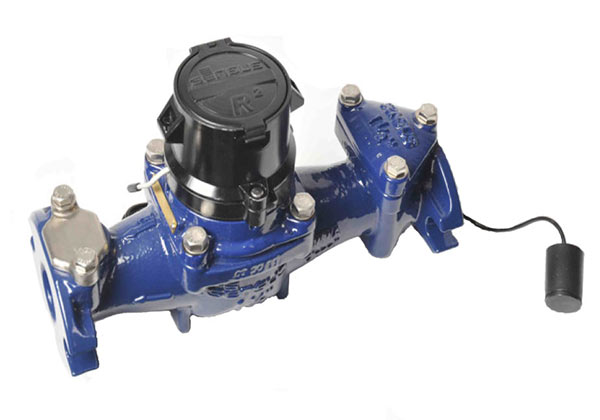

Christopher Case did the preliminary work in helping to understand how the HMC5883L works with the water meter and connection to the Proton. This process counts the number of oscillations and converts it to gallons (or liters ). It reduces the piston oscillations into volume totalization units displayed on the register dial face." In other words, for this process to work, you need a meter that has a magnet driving the meter. The driven magnet is connected to the register gear train. A drive magnet transmits the motion of the piston to a driven magnet located within the hermetically sealed register. The hydrodynamically balanced piston oscillates around a central hub, guided by the division plate. Per the meters datasheet, "Water flows through the meter’s strainer and into the measuring chamber where it drives the piston. So far I've had to learn a little C++ for the Proton and Javascript for the Google sheets and an addon to Google sheets called AppSheets but I'm pretty familiar with Excel so constructing the sheet was not a problem and the rest just takes a little time and effort. I discovered Gustavo Gonnet's project on saving data on Google sheets and I knew I had an answer I could deal with. Since I know nothing about that, I began looking for alternatives. Cope suggested InfluxDB as a database and Grafana as the presentation program. I then discovered Christopher Cope's work with the Particle Proton and the HMC5883L magnetometer and began investigating further. The only thing I could find would cost about $750 and would only monitor my landscape water utilization. I was able to buy an application that connects to my PG&E Smart Meter to report real time usage on my iPhone so I was looking for something similar for my water meter. If you have problems finding your meter or reading it clearly, please call our office so we can try to assist you.With the California drought and a relatively high water bill, I decided that monitoring my water usage would be a worthwhile endeavor. You can also monitor the ninth number to the far right to check for leaks (see 2 in diagram below).
Sensus water meter wiring diagram plus#
If there is a plus sign in the middle of this circle, water is passing through the meter (see 4 in diagram below). Only the first four numbers at the far left will be programmed in 100 cubic feet and read for billing.Ĭheck for Leaks : To check for a leak make sure all water in the house is turned off and read the Flow Direction/Empty Pipe Indicator.

To Read : There are 9 digits/bars on the Sensus iPERL meter at the top of the digital display (see 1 in diagram below). For billing, you would not read the last four digits.Ĭheck for Leaks: To check for a leak make sure all water in the house is turned off and check to see if the black line on the red circle is moving. You may want to read these numbers for calculating your own usage, but they are not used for billing. To Read: The numbers on the dial give the meter reading to the 100ths of a cuft. This meter would read 550 for billing.Ĭheck for Leaks : To check for a leak make sure all water in the house is turned off and check to see if the black triangle is moving. You may want to read these for calculating your own usage, but they are not used for billing. To Read : The numbers on the dial in white give the meter reading, the numbers in black are the 10’s and 1’s on the meter reading. Although Birch Bay Water and Sewer only bills by hundereds of cubic feet, there are 2 different types of meter registers and each read slightly different. Your water charges are based on 100 cubic feet (cuft) units.īirch Bay water meters are all straight-reading meters, which resembles the odometer in a car. One cubic foot = 7.48 gallons and 100 cubic feet = 748 gallons.


Water meters in the Birch Bay measure volume in cubic feet. There will be a wire attaching the meter to the box lid, follow the wire down and it will attach to the top of the meter. If your meter is buried or not visible when you remove the lid you may need to uncover it. Carefully remove the smaller lid by using a tool such as a large screwdriver, and then pull the whole lid off the box. Meters are typically found in a plastic or concrete box (as shown in the photo). You should see your meter box and your neighbors. Meters in Birch Bay tend to share property corners so check the front property corners first. In Birch Bay, your water meter is generally located near the curb or street in front of your home.


 0 kommentar(er)
0 kommentar(er)
